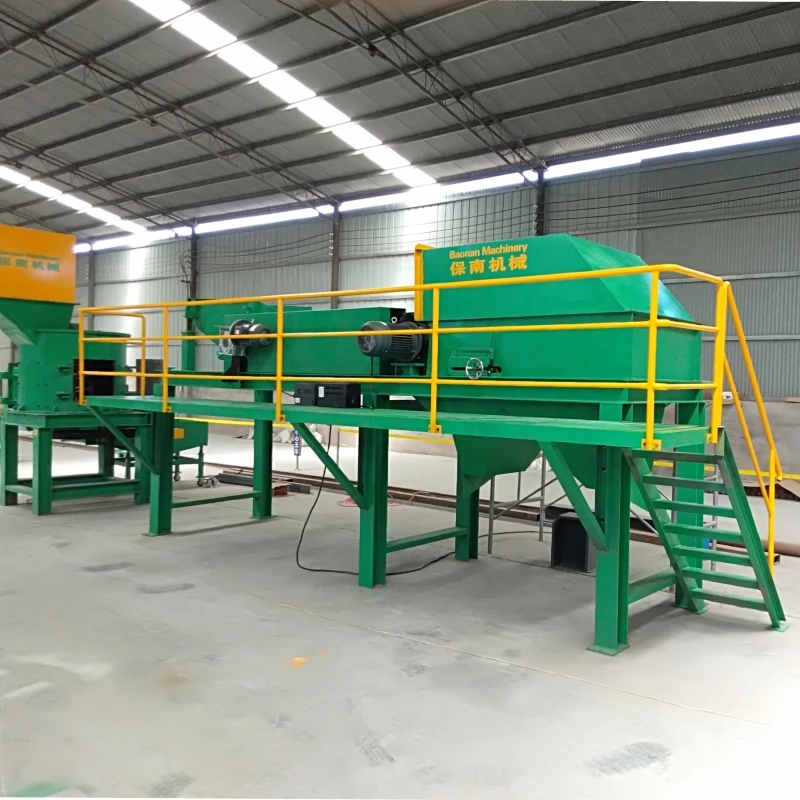

Nov . 07, 2024 13:11 Back to list
How Metals are Sorted in Recycling Plants
Recycling has become an essential part of modern waste management and environmental conservation efforts. Among the various materials processed, metals are particularly valuable due to their ability to be recycled indefinitely without losing quality. However, sorting metals in recycling plants can be a complex process, given the wide variety of metals and their alloys. This article explores the methods and technologies used to sort metals effectively in recycling facilities.
Initial Collection and Preprocessing
The journey of metal recycling begins with the collection of scrap metal. This material can come from many sources, including construction sites, automotive repairs, discarded appliances, and industrial manufacturing processes. After collection, the scrap is transported to recycling plants, where an initial preprocessing phase occurs. This involves the removal of non-metal components, such as plastic, rubber, and other contaminants, using manual labor and industrial shredders. The objective at this point is to produce a more uniform metal feedstock for further processing.
Magnetic Separation
One of the primary methods used in metal sorting is magnetic separation. Ferrous metals, such as iron and steel, are magnetic, making them easy to separate from non-ferrous metals (like aluminum, copper, and brass). Magnetic separators, which can take various forms—overhead magnets, magnetic drums, and magnetic pulleys—are used to attract ferrous materials and remove them from the mixed metal stream. This technique is not only efficient but also helps to reduce the volume of materials needing further separation.
Eddy Current Separation
After the ferrous metals are extracted, the remaining materials undergo a process known as eddy current separation. This technique is particularly effective for non-ferrous metals. Eddy current separators utilize a high-speed rotating magnet to induce an electrical current within non-ferrous metals, creating a magnetic field that repels these metals away from the non-metal debris. This process allows for a highly efficient separation of aluminum cans, copper wires, and other valuable non-ferrous materials.

Density Separation
Another important sorting technique used in metal recycling is density separation. This method relies on the differences in density among various metals and materials. In a fluidized bed or air classifier, materials are subjected to air or water that separates them based on their weight. For instance, lighter materials float while heavier metals sink, allowing operators to segregate them effectively. This process is beneficial when dealing with mixed materials containing metals along with plastics and other lightweight substances.
Optical Sorting
With advancements in technology, optical sorting has gained prominence in metal recycling. This method involves the use of cameras and advanced image processing software to identify and sort metals based on their color, shape, and reflectivity. Optical sorters can rapidly process large volumes of material, distinguishing between different metal types and even separating alloys. This technology significantly enhances the efficiency of the sorting process and ensures a higher purity of the final metal streams.
Manual Sorting
Despite the advancements in technology, manual sorting plays a crucial role in the recycling process. Workers are trained to identify specific metals and alloys that machines might miss or miscategorize. Manual sorting is particularly important for precious metals and complex alloys, where expertise is required to ensure accurate classification. The human element in this process not only improves the quality of the sorted metals but also provides flexibility in adapting to variations in the input material.
Conclusion
In summary, the sorting of metals in recycling plants is a multifaceted process that employs a combination of technologies and human expertise. From magnetic and eddy current separation to density methods and optical sorting, each technique plays a vital role in effectively segregating valuable metals for recycling. As technology continues to advance, the efficiency and effectiveness of metal sorting are expected to improve further, making recycling plants even more capable of turning waste into reusable resources. The importance of these processes cannot be overstated; they play a crucial role in conserving natural resources, reducing landfill waste, and promoting environmental sustainability.
Latest news
Troubleshooting Common Eddy Separator Problems
NewsJul.04,2025
The Role of Metal Recycling Plants in Circular Economy
NewsJul.04,2025
The Impact of Recycling Line Pickers on Waste Management Costs
NewsJul.04,2025
Safety Features Every Metal Shredder Should Have
NewsJul.04,2025
How Industrial Shredders Improve Waste Management Systems
NewsJul.04,2025
How Cable Granulators Contribute to Sustainable Recycling
NewsJul.04,2025